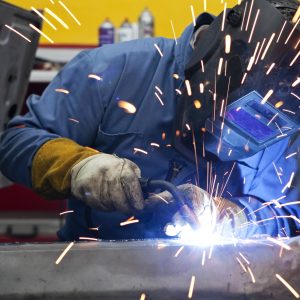From subsidised RPL programs to state-specific trade licensing initiatives, the landscape is shifting in favour of skilled workers who want their hands-on knowledge recognised. Whether you’re a plumber, fabricator, or anyone who’s spent years learning on the job, these changes mean you could save thousands—and fast-track your career.
Here’s what you need to know.
What government support is available for RPL?
Australia’s VET (Vocational Education and Training) sector is increasingly focused on practical skills and pathways to employment. That’s where RPL courses come in.
The federal government, through its National Skills Agreement, has committed to supporting RPL as a core component of upskilling the workforce. RPL is now frequently included in funded training initiatives aimed at meeting skills shortages across trades and essential services.
Here are a few of the most relevant supports available:
- Skills First (Victoria) – Offers subsidised RPL for priority qualifications, including plumbing and fabrication.
- Skilling Queenslanders for Work (QLD) – May provide funding or subsidised assessments for eligible workers, especially those seeking a trade licence.
- Smart and Skilled (NSW) – RPL funding is available under this program for approved qualifications delivered by recognised RTOs.
- Free TAFE and Fee-Free TAFE initiatives – These sometimes cover or reduce the cost of RPL for courses aligned with state priority occupations.
While not every qualification is funded under every scheme, many of the trade-related pathways, such as Certificate IV in Plumbing and Services (CPC40920) or Certificate III in Engineering Fabrication Trade (MEM31922), are on the priority skills list in multiple states.
You can check government information and eligibility on My Skills or your local TAFE provider’s site.
How subsidies help tradies get qualified
Qualifications don’t come cheap. Without funding, RPL assessments can cost anywhere from a few hundred to several thousand dollars, depending on the complexity of the trade and the volume of evidence required.
But with the right RPL government funding, that cost can be dramatically reduced—or even covered in full.
For example:
- A plumber looking to apply for their trade licence in Queensland may be able to access subsidised RPL through Skills Assure suppliers if their qualification is listed under a construction skills pathway.
- In Victoria, a fabricator with years of welding and metalwork experience may be eligible to complete their Certificate III in Engineering – Fabrication Trade (MEM31922) with reduced fees through Skills First funding.
- In NSW, workers in priority industries can claim Smart and Skilled subsidies that offset the cost of RPL courses Australia-wide, often by several thousand dollars.
And the benefits go beyond dollars and cents. With financial barriers lowered, more skilled workers can get the recognition they deserve, apply for licences, and unlock better pay or promotion opportunities.
Who’s eligible for funded RPL courses?
Eligibility criteria for subsidised RPL programs vary by state, but most funding models follow a few common rules.
You’ll usually need to:
- Be an Australian citizen or permanent resident
- Reside in the state offering the subsidy
- Not have completed the same qualification previously
- Be able to provide sufficient evidence of experience (photos, references, job history)
- Apply through a Registered Training Organisation (RTO) like Skills Certified
Some programs also prioritise specific cohorts, such as early school leavers, long-term unemployed workers, or people already working in shortage occupations like construction or aged care.
It’s worth noting that RPL isn’t just for current tradies. Even if you’ve been working in a related industry or as a sole trader without formal qualifications, you may still be eligible to apply.
Need help figuring out if you qualify? Skills Certified’s plumbing services team and course advisors can guide you through the eligibility maze.
Navigating state-based incentives for trade licensing
Trade licences—especially in plumbing, building, and electrical—often require formal qualifications as a baseline. That’s where state-based funding can bridge the gap between experience and paperwork.
Let’s take a closer look at a few examples:
Plumbing RPL and Cert 4 Pathways
A plumber with 8+ years on the tools but no formal certificate may need a Certificate IV in Plumbing and Services to apply for a licence. Skills Certified offers Cert 4 Plumbing (CPC40920) via RPL, and in states like NSW or VIC, the course may be eligible for government funding if it’s delivered through an approved RTO.
Engineering and Metal Fabrication
Worked in welding, metalwork, or boilermaking? The Certificate III in Engineering – Fabrication Trade (MEM31922) recognises those hands-on skills. Through Skills Certified’s program, you may be eligible for Smart and Skilled (NSW) or Skills First (VIC) support to reduce your fees or accelerate your trade licence application.
Each state has its own unique quirks, funding cycles, and approval systems, so it’s advisable to consult with an advisor or conduct a quick eligibility check before applying.
Why government-funded RPL is a game changer
The Australian workforce is shifting. There’s greater demand for tradies, builders, and skilled workers than ever, but many of the most capable people don’t have the formal qualifications to match their experience.
Government funding for RPL is changing that. By lowering the financial barrier, state and federal programs are making it possible for more Australians to get qualified faster—and for less.
If you’ve got the skills but not the paperwork, now’s the time to explore your options. With the right guidance and funding, your next qualification could be closer than you think.
Ready to get started? Reach out to Skills Certified for a free consultation or check your eligibility online.
















